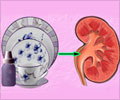Scientists at the Ohio State University have identified a gene called profilin 1 whose effects in blood vessels triggers a process that causes high blood pressure in otherwise healthy adults.
Scientists at the Ohio State University have identified a gene called profilin 1 whose effects in blood vessels triggers a process that causes high blood pressure in otherwise healthy adults.
This makes conditions in vessels ready for the creation of blockages that can cause heart attacks, strokes and circulatory problems. These findings might lead to new therapeutic options for high blood pressure, especially hypertension associated with aging.The study was led by Hamdy Hassanain, assistant professor of anesthesiology at Ohio State University and senior author of the study. Hassanain also is an investigator in Ohio State's Davis Heart and Lung Research Institute.
Though there are many intensive treatments available for hypertension but still only a little has been done to prevent it. Vascular remodeling, which is a change in the structure of the blood vessels, increases with age and sets off the disease.
During remodeling, blood vessel walls increase in thickness, thereby decreasing the diameter of the channel through which blood normally flows.
Profilin 1 is found to be linked to a series of interactions within the smooth muscle cells of blood vessels that causes those cells to increase in size. This causes the channel through which blood flows to narrow down, causing stress on vessel walls, injuring the lining of the vessel walls and making it easier for blockages to develop.
Researchers hoped to identify the most effective therapeutic target to interfere with the disease process by identifying this pathway and thus used genetically altered mice that produce excessive amounts of the human profilin 1 gene in the vascular smooth muscle cells.
Advertisement
“We created the disease in the animals and then went backwards to understand how the disease developed. This is an important finding because vascular disease originates in the smooth muscle cells, which have significant impact on the dysregulation of blood pressure that leads to heart disease,” said Hassanain.
It was done to test the theory that the impaired regulation of the profilin 1 gene would eventually lead to high blood pressure, and observe how that happens.
“Profilin 1 is a tool that triggers events that make the vessel more constricted and leads to the signal that results in vascular remodeling. Because we have understood the pathway of the disease process, we might be able to control vascular remodeling,” said Hassanain.
The findings were published in the recent issue of the Journal of Biological Chemistry.
Source-ANI
KAR/M











